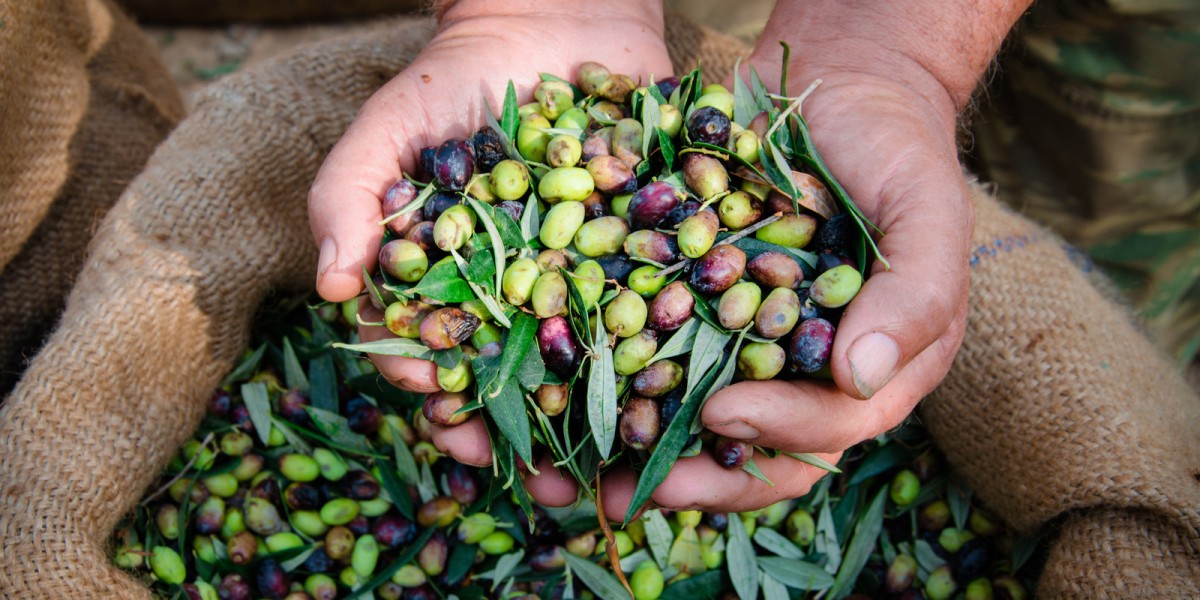Harvesting Olives: Useful information that helps you recognize a good olive oil when you meet it.

One of the most debated questions among growers is when to harvest. Harvesting can be done in many different ways, from hand-picking to completely mechanized harvesting.
The different options are important to understand as harvesting costs can make a big difference in the production cost of the olive oil.
Two basic facts - among several others - during harvest are most responsible for the quality, taste and shelf life of the olive oil you buy in super markets : time of harvesting and maturity of the olive fruit.
Timing
Nothing gets more discussion among olive growers than when to pick. It can make all the difference as far as yield, organoleptic characteristics, shelf life, and color.
Fruit maturation depends among other things on olive variety, temperature, sunlight, and irrigation. A hot fall can cause fruit to ripen quickly, resulting in a narrow window for optimum picking. A cool fall may result in green fruit hanging on the tree well into winter. Some farmers are forced to pick greener fruit than they want to hedge against frost damage or a big storm.
Maturity Stage
Immature olives are green and quite firm. They produce oil that is bitter and grassy with unripe and vegetative characteristics. These oils are high in polyphenols (anti-oxidants) and other flavor components. As a result, they are quite bitter and pungent and have a long shelf life thanks to these natural preservatives.
As the olive fruit matures from green to yellow-green, it starts to soften and then the skin turns red-purple in color. This is called veraison. The olives still have high polyphenol content at this stage, and are starting to develop some ripe-fruity characteristics. Oils produced from fruit harvested at this stage have some bitterness and some pungency. They have close to a maximum amount of oil per dry weight. The olives are often considered to be at their peak for olive oil production.